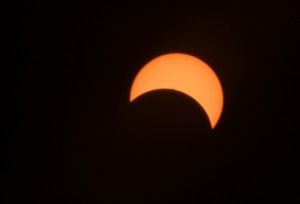It’s a car and it costs $6,800 and no, it isn’t a Craigslist clunker—in fact it’s brand-new. Meet Elio, a three-wheeled two-seater that runs on gas and averages 84 miles per gallon. It’s safe, it’s American-made, and it goes on sale next year.
Need a ride sooner, or looking for something bigger? Consider the Toyota Mirai, a hydrogen fuel-cell sedan that has a range of 300 miles per five-minute refuel and only emits water. Yes, water. The car hits Southern California in October, with a sticker price of about $58,000 or a lease price of $500 per month.
Green energy has crept into our lives slowly over the past decade, in the form of hybrid vehicles and high-efficiency washing machines, but experts expect future clean tech to develop more rapidly, with help from new initiatives and technological advancements, as touted during Sen. Harry Reid’s eighth National Clean Energy Summit August 24 at Mandalay Bay.
“Six years ago, smart meters were pretty rare,” said President Barack Obama during his keynote speech. “Today, 60 million consumers have access to detailed information about how much energy we use, how we use it, when we use it. … We can control our thermostats from our smartphones. New appliances and smart devices can tell when energy prices are cheapest, and do laundry, or wash the dishes, or charge our car at those times.”
In housing, UNLV promoted existing KB and Pulte zero-energy models with built-in solar and other green upgrades. Rooftop solar options prevail, from installers like Bombard Renewable Energy and SolarCity, and new financing plans are bringing it to a wider audience. Property-Assessed Clean Energy financing (PACE), which Obama announced at the summit, allows homeowners to pay for solar-panel installations over time through their property taxes.
And then there’s the boost to the job market. Last year, solar prices fell by 10 percent and installations rose by 30, opening the industry not only to new customers, but to new employees. In the U.S., there are 75,000 solar workers (8 percent are Nevadans), more than 50,000 wind-power workers and federal plans to put 75,000 veterans to work in solar by 2020.
Obama admonished solar-opposing legacy utilities, and deemed the climate issue nonpartisan: “If you’re a progressive, you should care about this. If you’re a libertarian, you should care about this. If you just want to save some money, you should care about it. And if you care about the future of our children and grandchildren, you should care about it.”
Judging by the conference’s high turnout, people do care.









